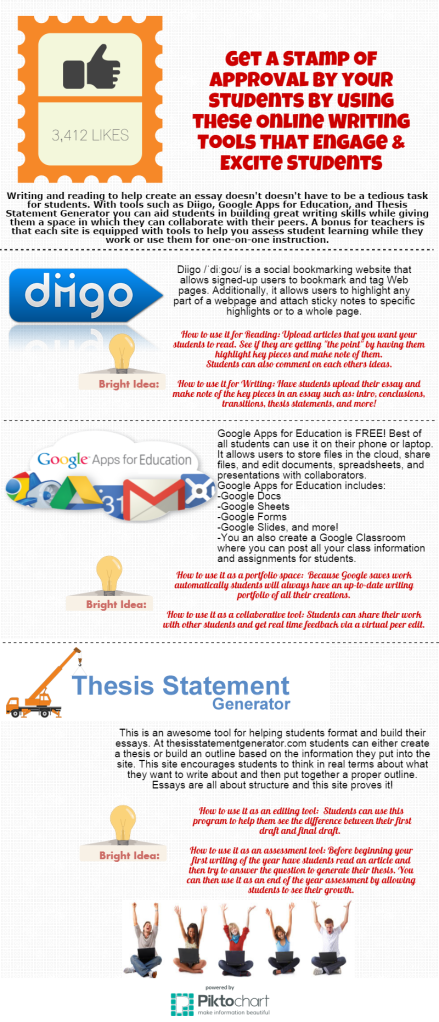How does one go about creating an informational piece that is both concise and eye-catching? Normally a question asked by advertising or marketing experts, it’s one that runs through the heads of educators every day. Whenever presenting material to students we inevitably think about the best way we can deliver information so it is both easy to understand and engaging. Questions such as, “Will they understand this?” and “Am I making it clear?” are often just a few of the many factors we think about when designing units and lesson plans. While we can only hope that the end product they submit answers those questions for us, we sometimes learn that what we thought was completely clear in regards to instructions and learning goals is missed by students.
So how can we cut through the clutter in today’s learning landscape to find solutions and sites that help us afford the most to our students in the way of targeted lessons that both engage and help assess their true learning? As complex of a question as that is, its answer most certainly lies in how well we understand their process of learning and the motivation we provide to them to continue to seek the answers. Keeping this in mind, I went in search of digital tools that would provide students with platforms that would grow with them as a learner and afford them the opportunity to collaborate with peers. I also wanted them to begin building a space in which they could use for an online learning portfolio. In my research I found three sites that would give students this type of safe learning space: Diigo, Google Apps, and an online writing site called Thesis Generator. Each of these digital tools afford students, and teachers, the ability to explore different facets of reading and writing online to include one-on-one instruction, differentiated learning processes and assessment opportunities What’s more is these sites give educators the ability to bring state standards and district curriculum guides into play. Knowing this is the basis for all instruction, these sites help reinforce important concepts so students can continue to build upon current skill sets while giving them the ability to track their learning and see their progression over time. As noted within recent research, a good assessment consists of a scaffolded learning processes (Shepard 2000;2005) and is melded with students having the ability to track their own growth through varying assessment process that are tied to both learning goals that are achievable; as well as student centered (Marzano 2009).
Keeping these very important ideas in mind, I created an infograph to highlight these three sites and show how they could be used in the classroom. Feel free to use them in your classroom.
Engaging Students in Essay Writing Infograph
Shepard, L. (2000). The role of assessment in a learning culture. Educational Researcher, 29(7), 4-14
Shepard, L. (2005). Linking formative assessment to scaffolding. Educational Leadership, 63(3), 66-70
Marzano, R. (2009). Classroom assessment and grading that work. Alexandria, VA: Association for Supervision and Curriculum Development.
